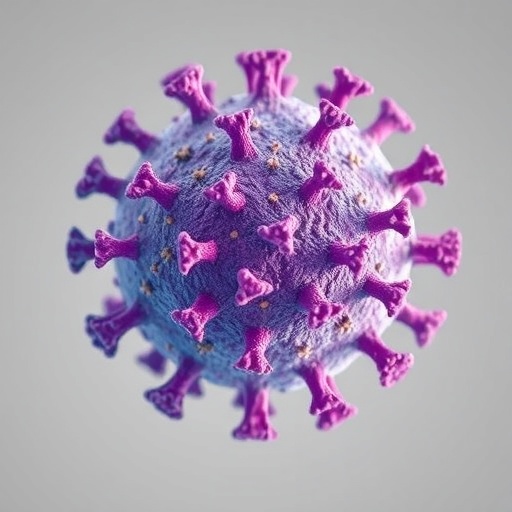The COVID-19 pandemic has undeniably reshaped virtually every facet of human life, but its impact on adolescent brain development is an unfolding story demanding urgent scientific scrutiny. A groundbreaking study recently published in Translational Psychiatry unveils how the prolonged social isolation, educational disruptions, and pervasive stress wrought by the global crisis have altered the neurobiological functioning in adolescents. This pioneering research delves deep into the neural underpinnings of these changes, providing the scientific community with one of the first comprehensive examinations of the pandemic’s long-term effects on the adolescent brain.
Adolescence is a critical period characterized by profound neural plasticity and rapid brain maturation, making it especially vulnerable to environmental stressors. The COVID-19 pandemic introduced unprecedented challenges—ranging from lockdown-induced social deprivation to increased psychological stress—which researchers hypothesized could leave lasting footprints on brain architecture and function. In this context, the study led by Yuan, J.P., Borchers, L.R., Lee, Y., and colleagues deployed advanced neuroimaging techniques alongside detailed behavioral assessments to map these consequences with remarkable precision.
At the center of their inquiry was the exploration of changes in key brain regions involved in emotional regulation, cognitive control, and reward processing. Functional magnetic resonance imaging (fMRI) scans were obtained from a cohort of adolescents during and after lockdown periods, capturing real-time brain activity patterns. The investigators reported pronounced alterations in the prefrontal cortex—a region integral to executive function—and the amygdala, a hub for emotional processing. These changes were accompanied by elevated activity in the limbic system, which is closely tied to stress responses.
The study’s findings gain additional significance when contextualized against the backdrop of behavioral data indicating increased prevalence of anxiety, depression, and attentional difficulties among youth during the pandemic. The neurobiological data reinforces these clinical observations by illustrating that the stress of prolonged uncertainty and isolation likely dysregulated the neural circuits governing mood and cognition. Notably, the reciprocal connectivity between the prefrontal cortex and amygdala was disrupted, suggesting impaired top-down regulation of emotional responses—a neural hallmark commonly observed in stress-related psychopathologies.
Beyond functionality, structural changes were also documented. Diffusion tensor imaging (DTI), a technique sensitive to the integrity of white matter tracts, revealed diminished connectivity in pathways crucial for inter-regional communication within the brain. These disruptions could underlie the cognitive inefficiencies and emotional dysregulation observed clinically. Intriguingly, these aberrations appeared more pronounced in adolescents who experienced greater socioeconomic hardships or whose support systems were severely compromised by the pandemic conditions.
The authors employed longitudinal analyses to distinguish transient effects from more entrenched neurobiological alterations. Data indicated that some neural disruptions tended to persist months after the resumption of normal social activities, hinting at potentially enduring developmental consequences if unaddressed. This persistence underscores a pressing need for targeted interventions to facilitate recovery and resilience-building in affected adolescents, potentially leveraging neuroplasticity during this malleable developmental window.
Mechanistically, the study sheds light on the role of chronic stress and inflammation as mediators of these brain changes. Biomarker analyses revealed elevated levels of pro-inflammatory cytokines in the bloodstream of participants, corroborating emerging models that link immune activation to neural remodeling during chronic stress. This neuroimmune interaction presents a compelling biological pathway explaining how psychosocial stress manifests into concrete neural changes, which could pave the way for novel therapeutic targets.
Notably, the research also explored protective factors that might buffer adolescents from adverse neurobiological impacts. Adolescents exhibiting robust social support networks or engagement in physical activity showed attenuated neural disruptions. These findings align with a growing body of literature emphasizing the neuroprotective effects of social connectivity and exercise, suggesting practical avenues for mitigating pandemic-related harm at the level of brain health.
This study also advances the methodological frontier by integrating multimodal imaging approaches with rigorous psychological profiling, thereby enriching our understanding of complex brain-behavior relationships amidst global crises. The multidimensional data set enables a nuanced view of how diverse stressors interplay at different neural levels, carving distinct neurodevelopmental trajectories that could forecast mental health outcomes into adulthood.
Importantly, the authors caution against oversimplification or deterministic interpretations of their findings. While highlighting concerning trends, the research emphasizes the heterogeneity of adolescent experiences and brain responses, shaped by genetic, environmental, and social determinants. Identifying individual vulnerability factors and resilience markers remains a key challenge and priority for future inquiries to instill precision in mental health interventions.
Overall, this seminal work not only reveals the neurobiological shadow cast by the COVID-19 pandemic on adolescent development but also galvanizes a multidisciplinary response integrating neuroscience, psychiatry, public health, and education. The implications stretch beyond academic interest, resonating deeply with policymakers and community leaders charged with safeguarding youth well-being in a post-pandemic world.
The unprecedented confluence of neurobiological data and real-world pandemic experiences offers a clarion call to action: investing resources in adolescent mental health now is critical to curbing the long-term societal consequences of pandemic-induced neurodevelopmental perturbations. This study sets the stage for innovative programs aimed at neural recovery and psychological resilience, harnessing the adolescent brain’s inherent capacity for adaptation and growth.
In closing, the authors advocate that sustained surveillance of adolescent neurobiological health is indispensable as the global community transitions out of the pandemic era. Longitudinal monitoring combined with intervention trials could illuminate pathways toward full neural and psychological restoration, potentially transforming this generational challenge into an opportunity for deeper understanding and enhanced care.
As the scientific world grapples with the complex aftermath of COVID-19, research like this draws a critical connection between societal upheaval and the intimate unfolding of our brains, reminding us that the echoes of a global crisis reverberate within the very fabric of adolescent development. The challenge ahead lies in translating these insights into meaningful actions that promote recovery, resilience, and renewed hope for the future.
Subject of Research: Neurobiological functioning alterations in adolescents due to the COVID-19 pandemic
Article Title: The effects of the COVID-19 pandemic on neurobiological functioning in adolescents
Article References:
Yuan, J.P., Borchers, L.R., Lee, Y. et al. The effects of the COVID-19 pandemic on neurobiological functioning in adolescents. Transl Psychiatry 15, 276 (2025). https://doi.org/10.1038/s41398-025-03485-2
Image Credits: AI Generated




